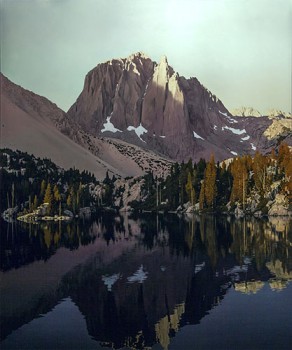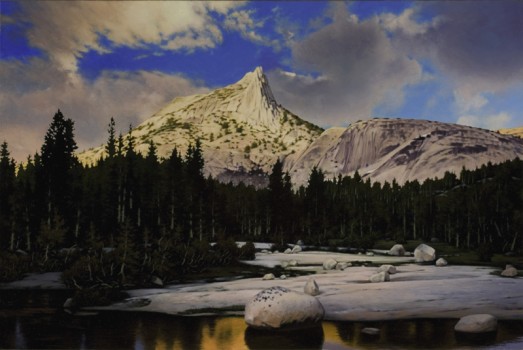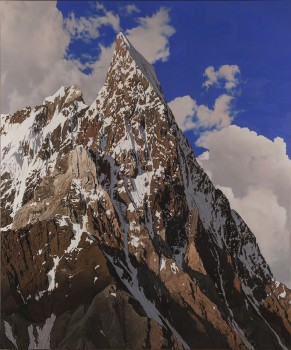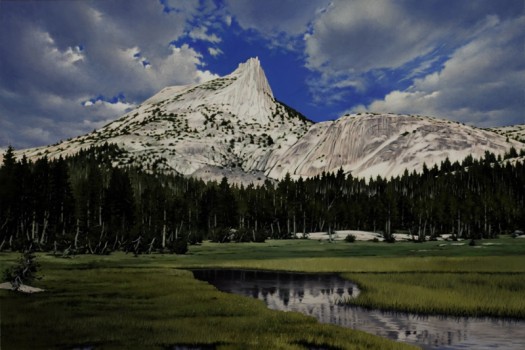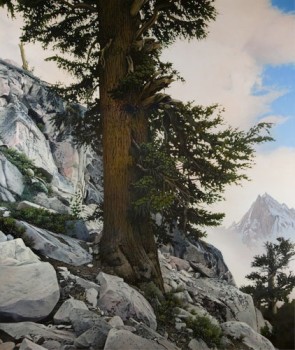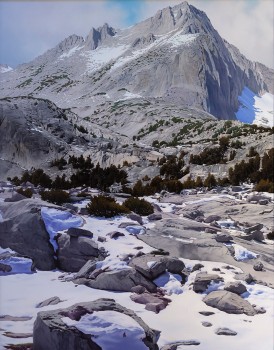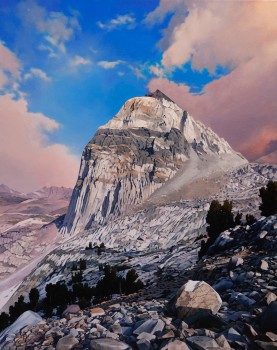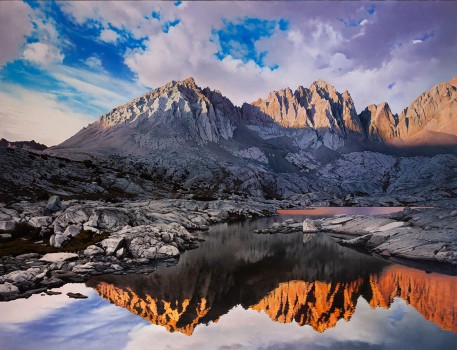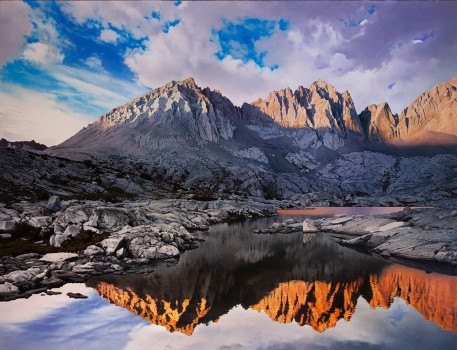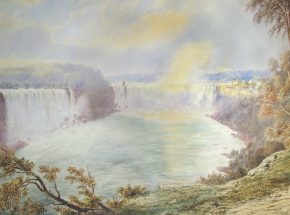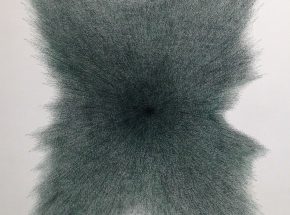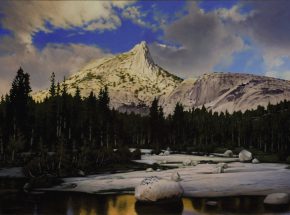

Here a California mountain range meets the Himalayas in majestic compositions that honor the stunning beauty and magnitude of nature, as well as American and Pakistani efforts to preserve natural sites through national park systems. Commissioned by Art in Embassies for the U. S. Embassy’s permanent art collection in Islamabad and based on original photographs, these views are seen through American photographer and painter Alan Sonneman’s lens and interpreted by him in painting.
The artist is reflective: “Mountains for me occupy a special place in man’s spiritual history in any culture where they are found. We have historically journeyed to them to find a sense of communion with the forces larger than ourselves. Perhaps it is the consistency of these places that give them meaning to us. There is knowledge of self to be found in such places. In the mountains your path is clear, it is the world as it is, apart from the day to day and the impact of man’s actions.”
Thinking about the influences on his art, he continues: “As a child growing up in the plains of the mid-western United States, many summers I visited the National Gallery in our nation’s capital in Washington, D. C. and fell in love with the nineteenth-century American landscape paintings by Frederic Church and Albert Bierstadt. They presented a mythic idea of wilderness as a very American ideal, and the mountains of Western America were at the heart of it.” Of Kearsarge Pass and Temple Crag at Sunrise, he says, “I have spent my summers over the past twenty years seeking this place in the Sierra Nevada of my home state of California, then returning to paint from the images I’ve captured with my camera.”
“This is not an ideal reserved strictly to America or Western values,” Sonneman continues, “the great Vedic, Hindu, Muslim, and Buddhist traditions of the East are equally drawn to the peaks of their native lands. When I was approached by the State Department with the prospect of developing some form of project for the new American Embassy in Islamabad, Pakistan, I saw the opportunity to show the commonality of our shared ideals…that these values are common to all of us no matter where we are originally from.” Of this opportunity, he says, “In juxtaposing an image from each of our cultures around a central image of a tree; a form of life which has the greatest longevity of living thing, perhaps I can show this common desire to find our higher nature.”
In Trango Tower, Sonneman focuses on the great Karakoram mountain range in the northern Pakistan, calling it “perhaps the most impressive massif on our planet and arguably the most inhospitable. Peoples from all over the Middle East have ventured there for millennium to find spiritual guidance. The great religious traditions of the West perhaps originated there as seekers ventured East to learn from more ancient traditions.”
The resulting art that captures “the heart of Pakistan and perhaps the most rugged and unworldly place on earth,” in the artist’s words, involved the Baltoro Glacier; the base camp of K2 at Concordia at elevations of 4,000 meters; and a detail of the Mitre, a 6,000 meter peak opposite K2.
For more than thirty years, Alan Sonneman has divided his career between the fine arts and the film industry. He has exhibited in galleries and museums across the United States, including the Corcoran Gallery of Art and the Katzen Arts Center at American University, in Washington, DC; The Alternative Museum, NYC; and The Southeastern Center for Contemporary Art, Winston-Salem, North Carolina. He also had one-person shows at the Riverside Museum of Art Riverside, California, in conjunction with his mural commission for the Riverside Hall of Justice (1992), and the Directors Guild of American, Los Angeles, California. Throughout his career, he has received several grants and fellowships, including a National Endowment for the Arts Fellowship in Painting. In film, he has contributed as a matte painter to such movies as Cliffhangers, Dante’s Peak, Titanic, Matrix Revolution, AI, and What Dreams May Come. From 1997 to 2001 he was an artist for Steven Spielberg’s company, Dreamworks.
Website
http://www.alansonneman.com
